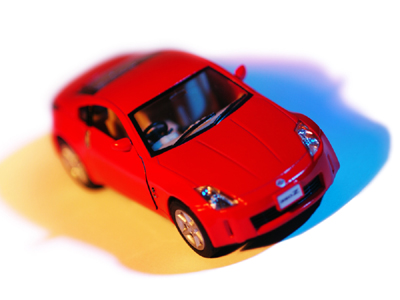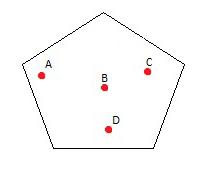
Ask the AI Tutor
Need help with Forces - Centre of Mass 02? Ask our AI Tutor!
AI Tutor - Lucy
Connecting with Tutor...
Please wait while we establish connection

Drive down to question 6 to find the centre of mass for a car.
Forces - Centre of Mass 02
This GCSE Physics quiz explores centre of mass and stability, showing how designers keep buildings, bridges, and vehicles safe from tipping by controlling weight distribution and support.
1 .
Which point on the diagram shows approximately where the centre of mass is for the shape, considering that the weight of each shape is evenly distributed across the whole of its surface?

A
B
C
D
The centre of mass for an object whose mass is equally distributed will lie along a line of symmetry
2 .
Which point on the diagram shows approximately where the centre of mass is for the shape, considering that the weight of each shape is evenly distributed across the whole of its surface?

A
B
C
D
Drawing in any two lines of symmetry for regular objects will show you where the centre of mass lies
3 .
Which point on the diagram shows approximately where the centre of mass is for the shape, considering that the weight of each shape is evenly distributed across the whole of its surface?

A
B
C
D
The lines of symmetry for a triangle go from a vertice to a point half way along the opposite face
4 .
Which point on the diagram shows approximately where the centre of mass is for the shape, considering that the weight of each shape is evenly distributed across the whole of its surface?

A
B
C
D
As with the previous examples, the centre of mass is the centre of symmetry
5 .
The diagram shows a binary star system. Assume that the two stars have the same masses. Where is the centre of mass for the system?

A
B
C
D
Two stars which are gravitationally attracted to one another will rotate about a point which gives a total moment of 0. The same goes for a planet and its satellites, the point around which they rotate is called the barycentre
6 .
Which point on the diagram shows approximately where the centre of mass is for the shape, considering that the weight of each shape is evenly distributed across the whole of its surface?

A
B
C
D
For an actual car, the centre of mass may be shifted slightly further to the front due to the weight of the engine
7 .
Which point on the diagram shows approximately where the centre of mass is for the shape, considering that the weight of each shape is evenly distributed across the whole of its surface?

A
B
C
D
A trickier one perhaps, but you should have been choosing between A and B. The centre of mass is seldom at the extreme edge of an object
8 .
Which point on the diagram shows approximately where the centre of mass is for the shape, considering that the weight of each shape is evenly distributed across the whole of its surface?

A
B
C
D
This is a regular shape so it could not be any of the others as they are too far to the left or right
9 .
Which point on the diagram shows approximately where the centre of mass is for the shape, considering that the weight of each shape is evenly distributed across the whole of its surface?

A
B
C
D
The symmetry means that you should have been choosing between points A and C
10 .
Which point on the diagram shows approximately where the centre of mass is for the shape, considering that the weight of each shape is evenly distributed across the whole of its surface?

A
B
C
D
The other three points are too far away from the centre
**Unlimited Quizzes Await You! 🚀**
Hey there, quiz champ! 🌟 You've already tackled today's free questions.
Ready for more?
Ready for more?
🔓 Unlock UNLIMITED Quizzes and challenge yourself every day. But that's
not all...
not all...
🔥 As a Subscriber you can join our thrilling "Daily Streak" against other
quizzers. Try to win a coveted spot on our Hall of Fame Page.
quizzers. Try to win a coveted spot on our Hall of Fame Page.
Don't miss out! Join us now and keep the fun rolling. 🎉
**Unlimited Quizzes Await You! 🚀**
Hey there, quiz champ! 🌟 You've already tackled today's free questions. Ready for more?
🔓 Unlock UNLIMITED Quizzes and challenge yourself every day. But that's not all...
🔥 As a Subscriber you can join our thrilling "Daily Streak" against other quizzers. Try to win a coveted spot on our Hall of Fame Page.
Don't miss out! Join us now and keep the fun rolling. 🎉






